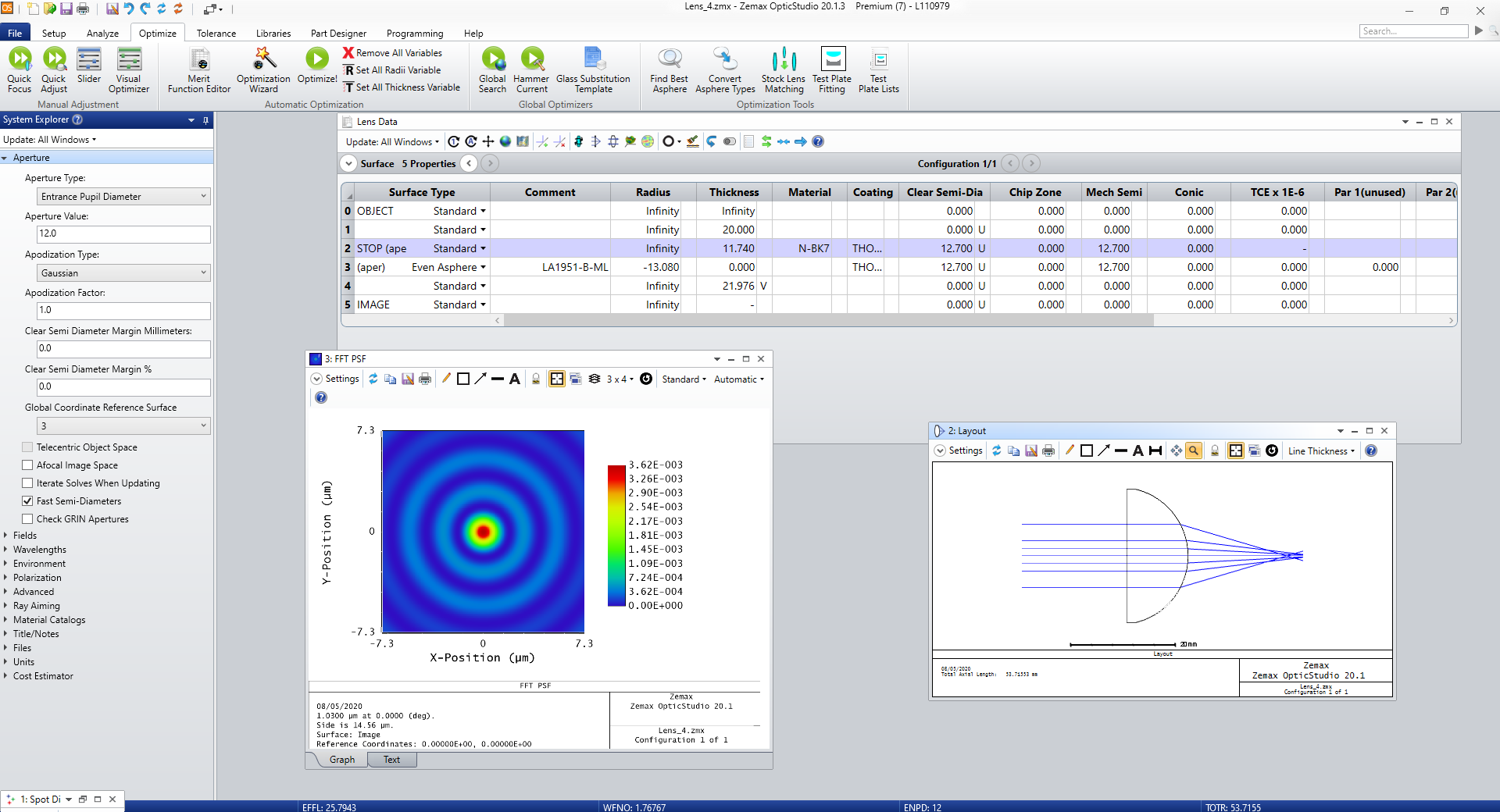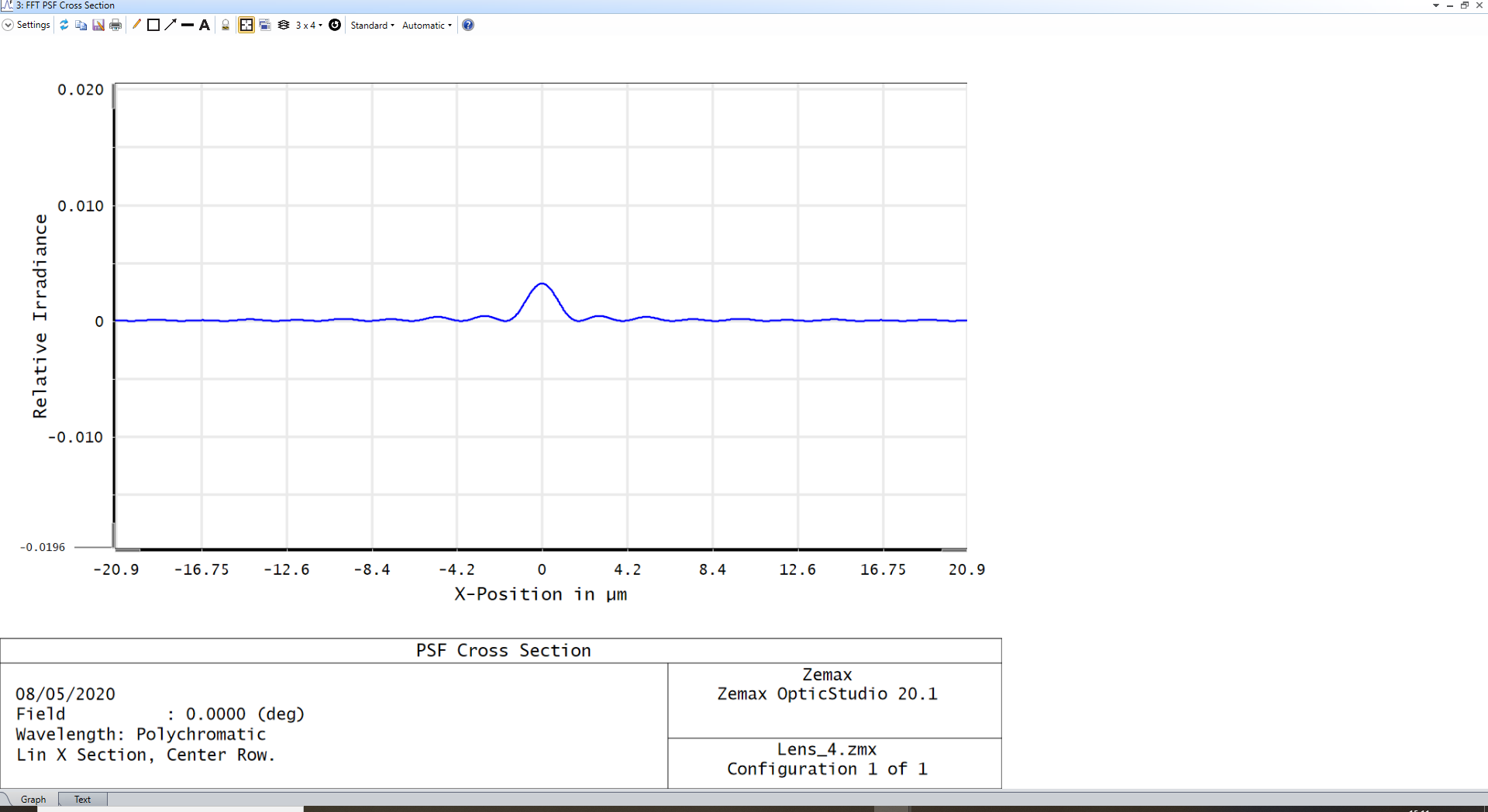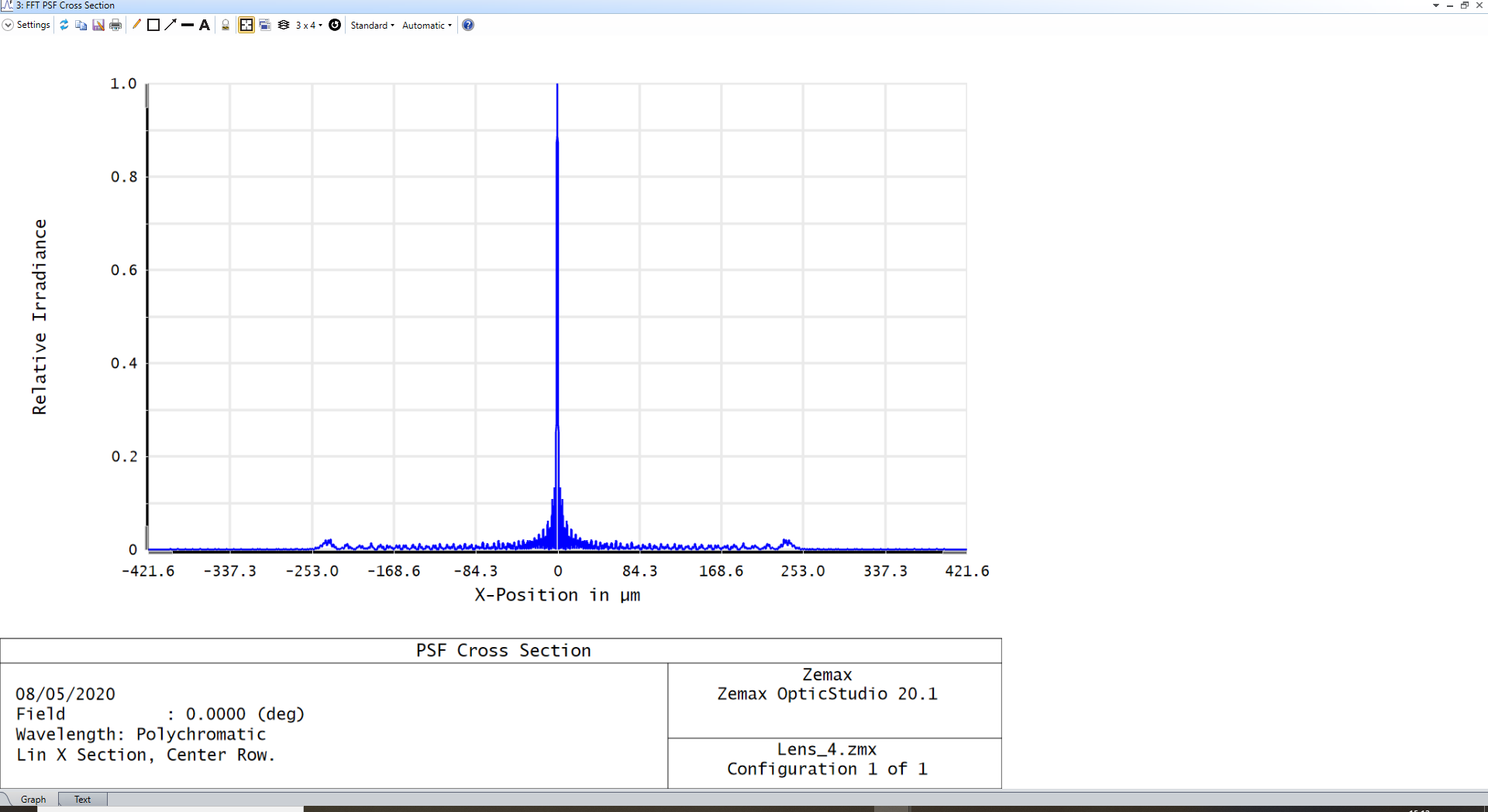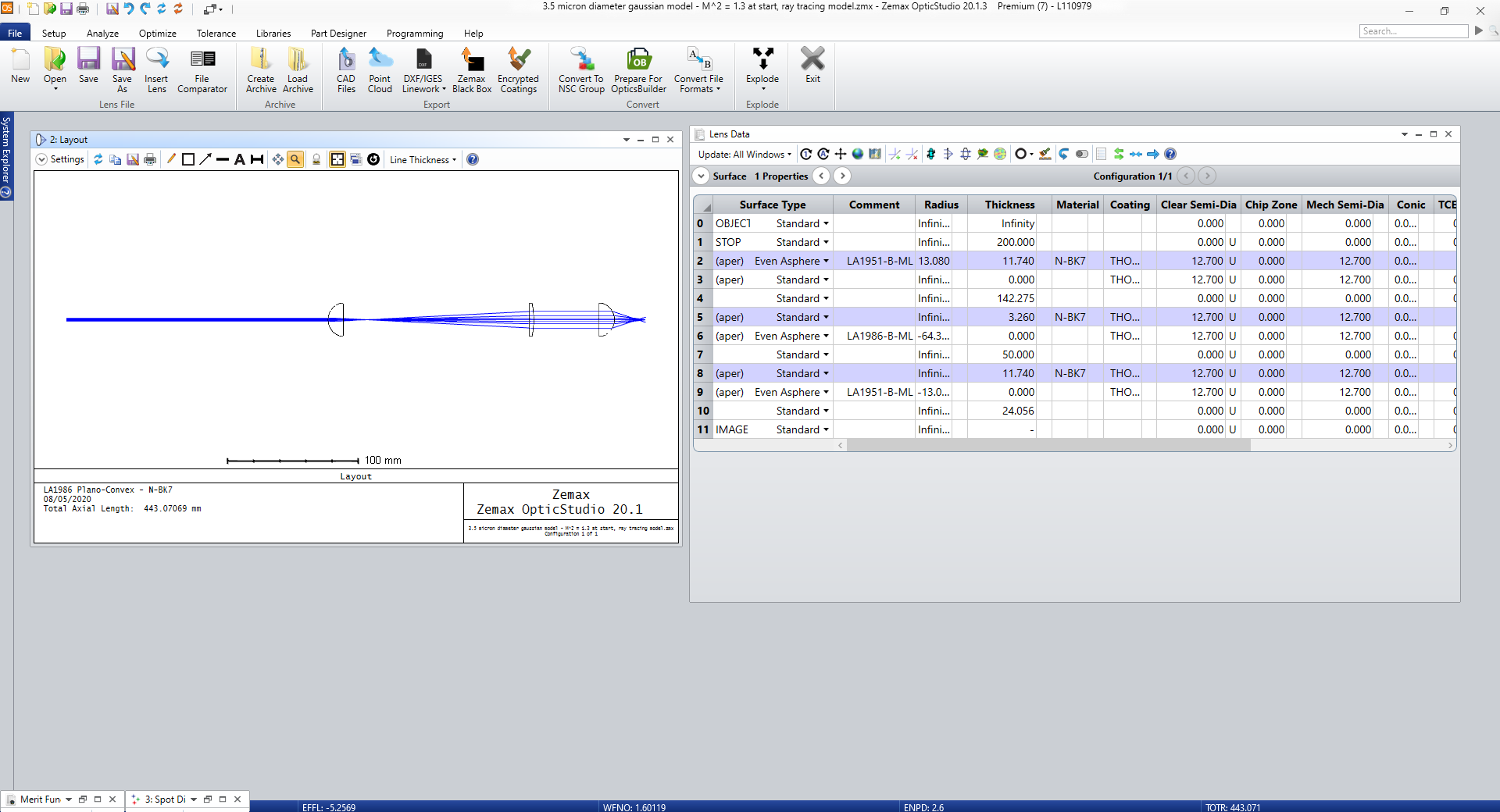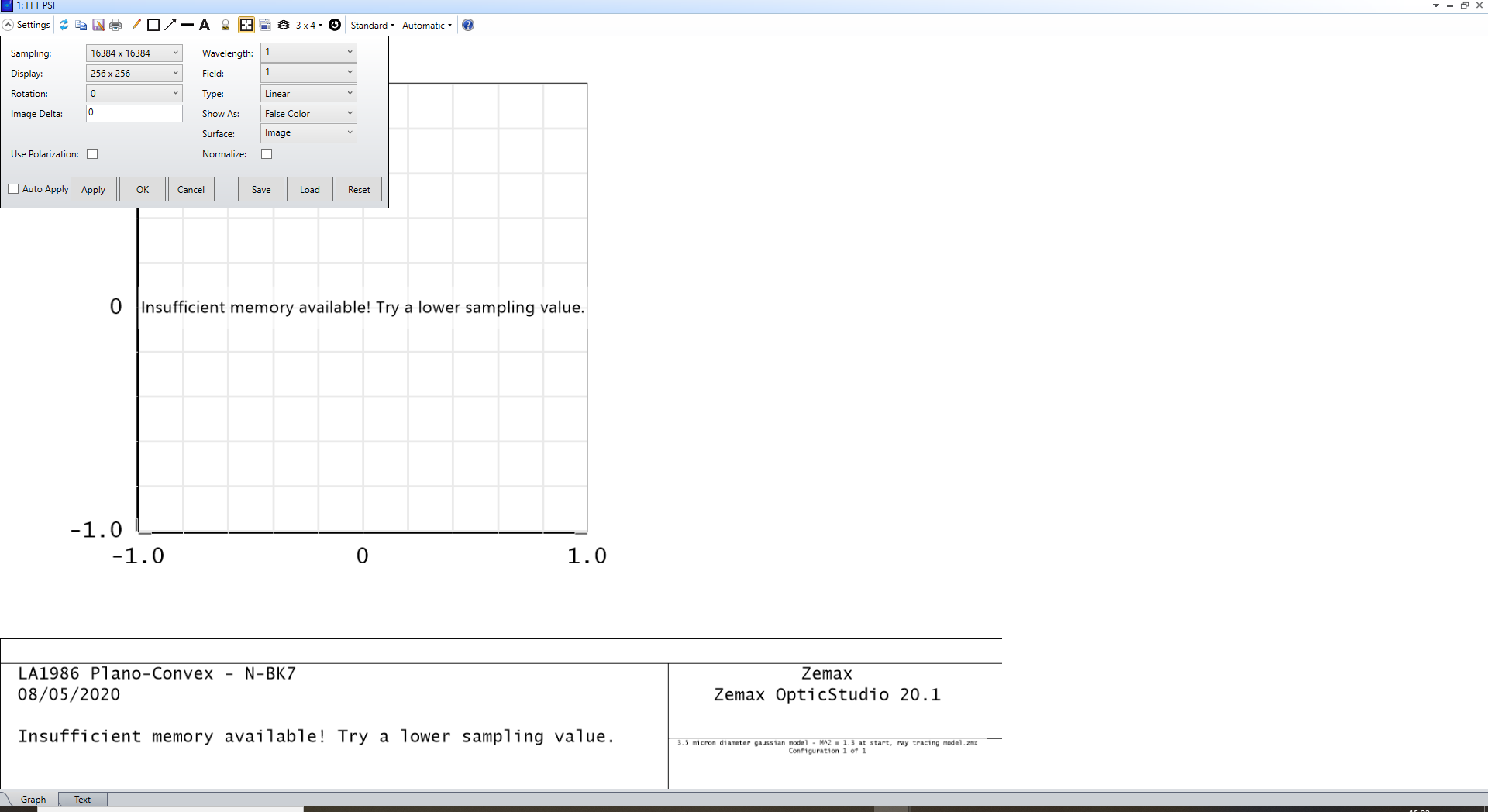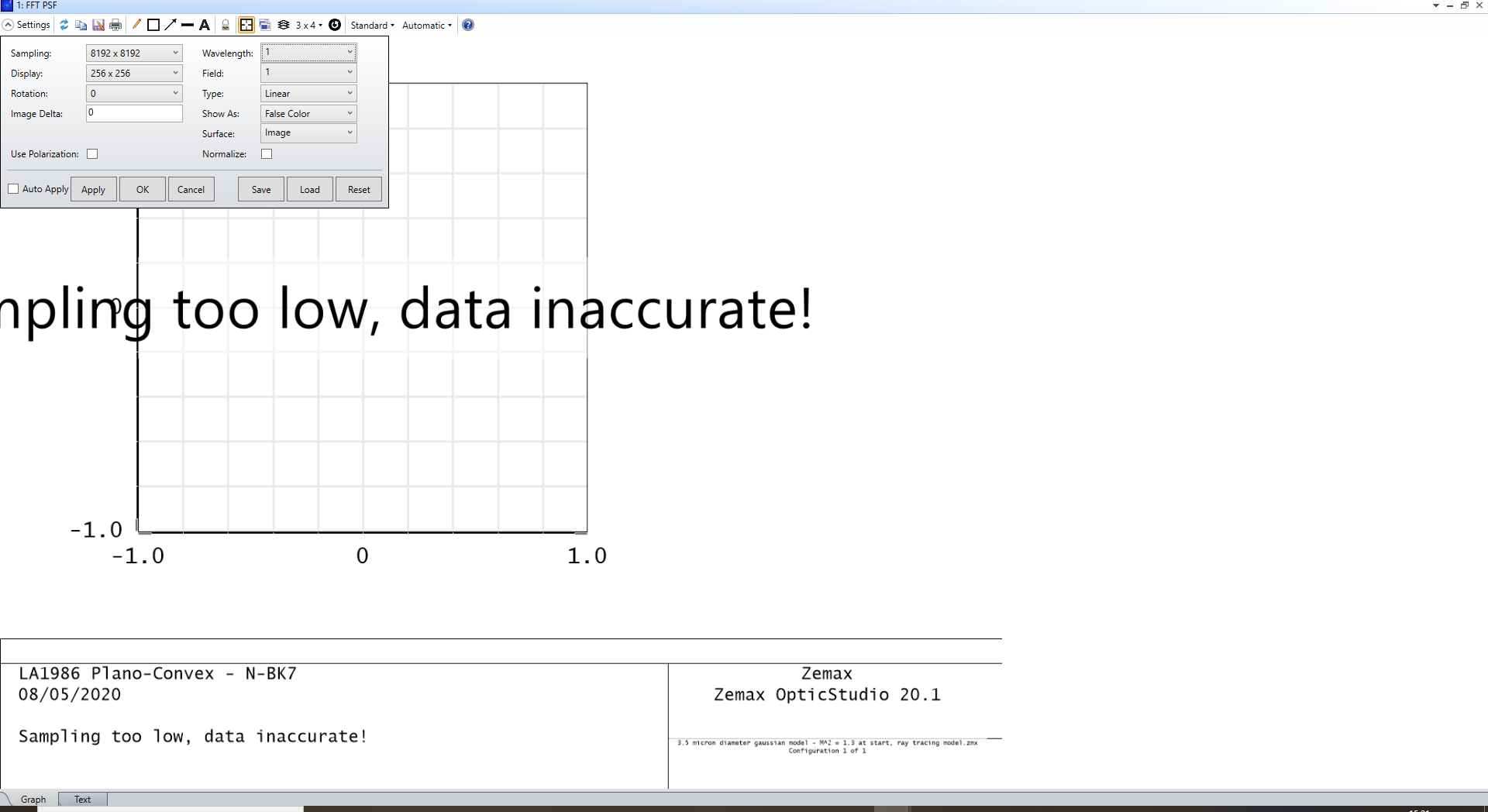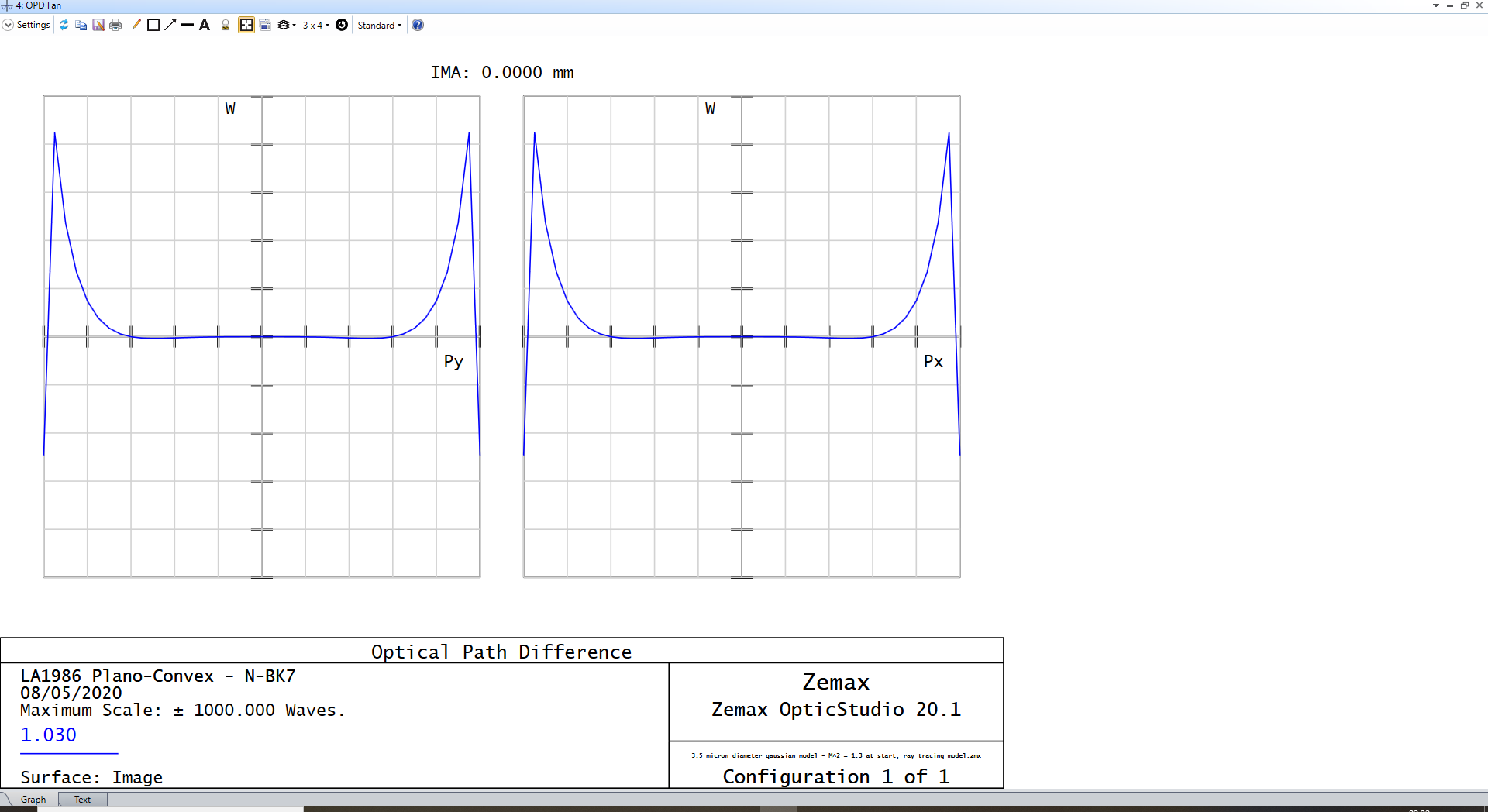Hi all,
I have had a difficult time trying to model a 12mm collimated input beam going into a 25.4mm focal length plano-convex lens (LA1951-B-ML, THORLABS). Calculations indicate that I expect a focussed Gaussian spot of around 3.5 micron diameter. Having read through the 'Using Physical Optics Propagation (POP)' articles, I believe this is due to a phase sampling issue.
Setup
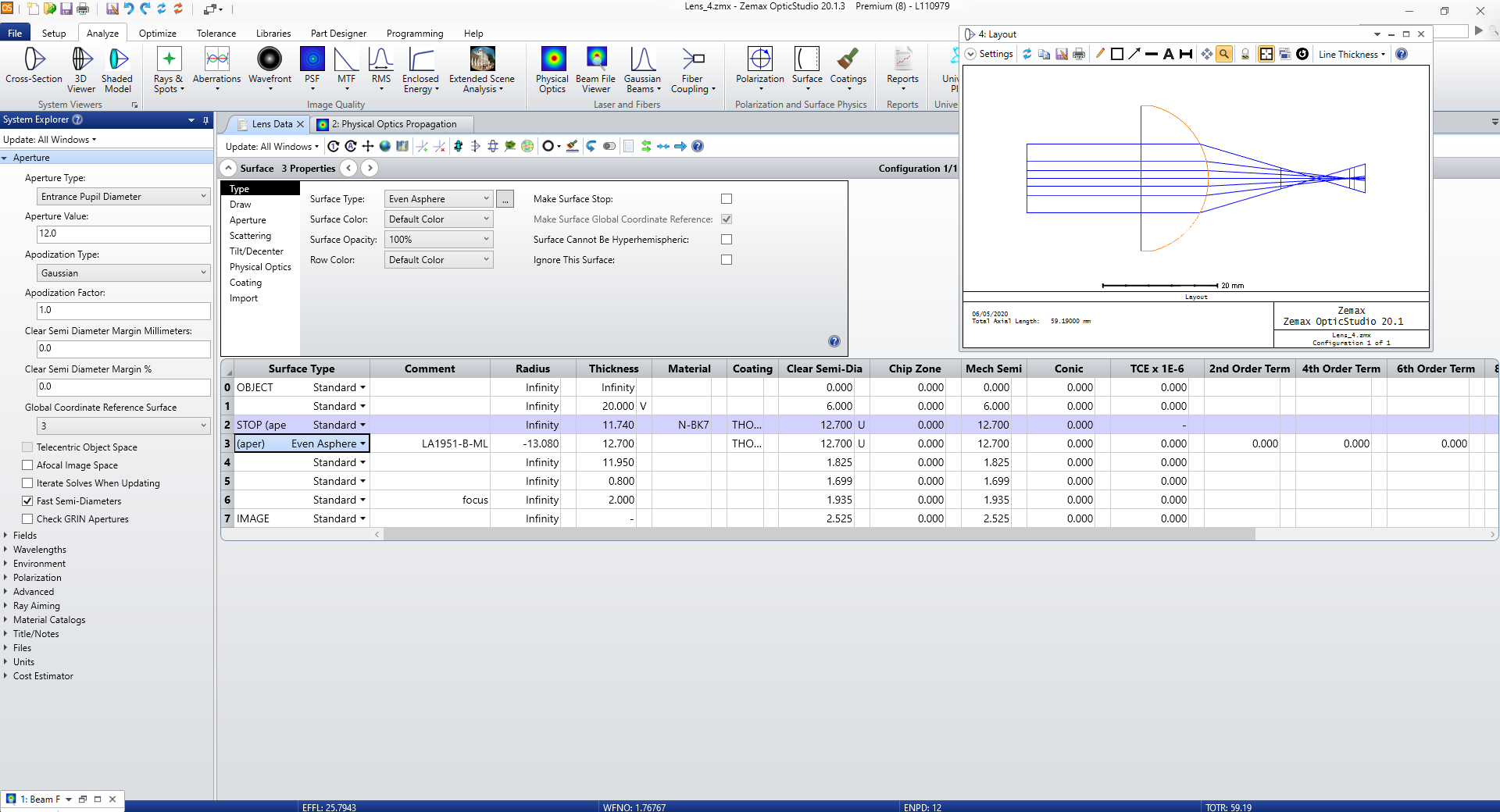
POP Settings - High Sampling
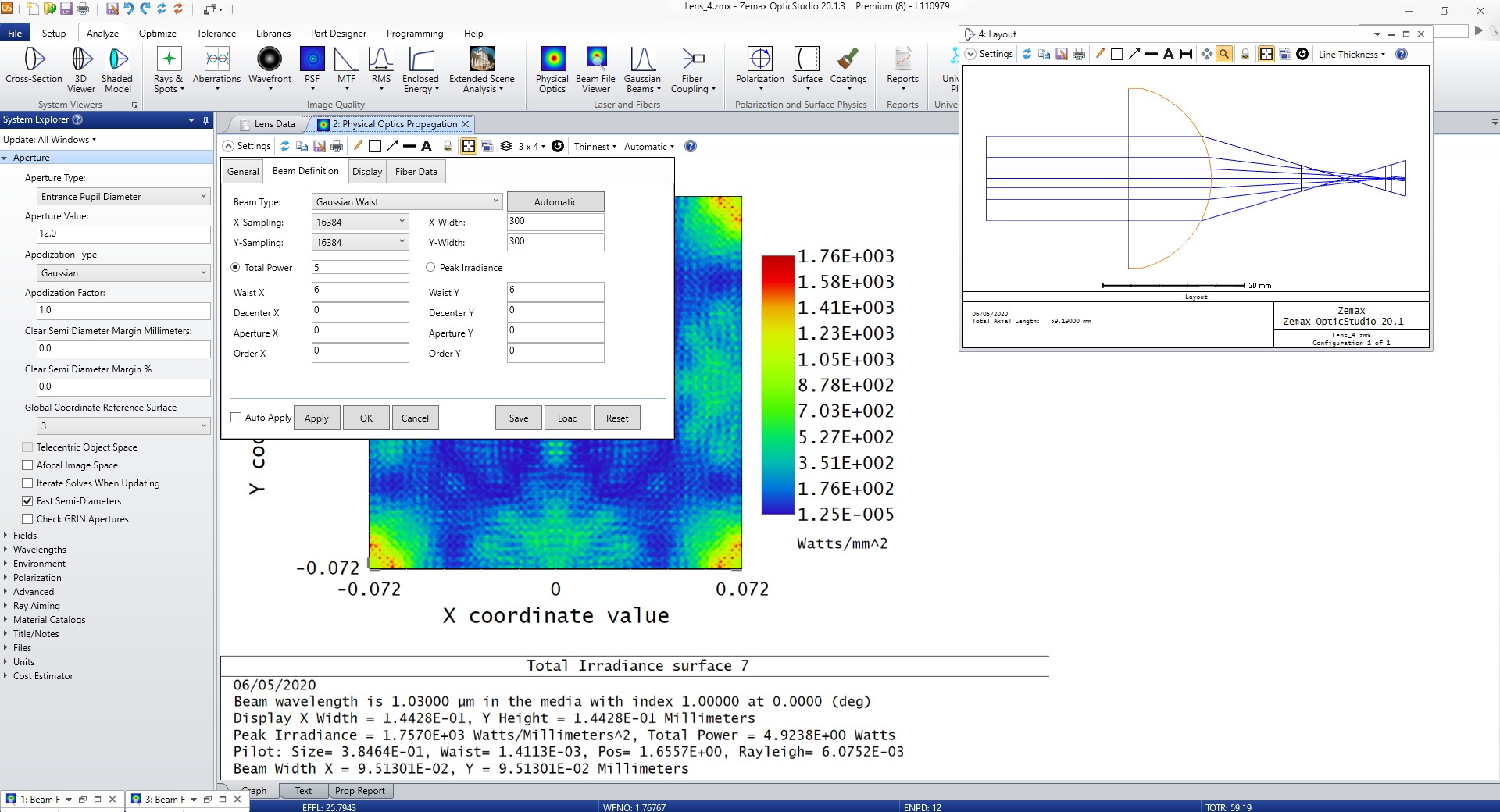
Upon running a highly sampled POP simulation, there is no phase difference across the incident beam from the free-space around it (at Surfaces 1 and 2).
Surface 2 - Irradiance
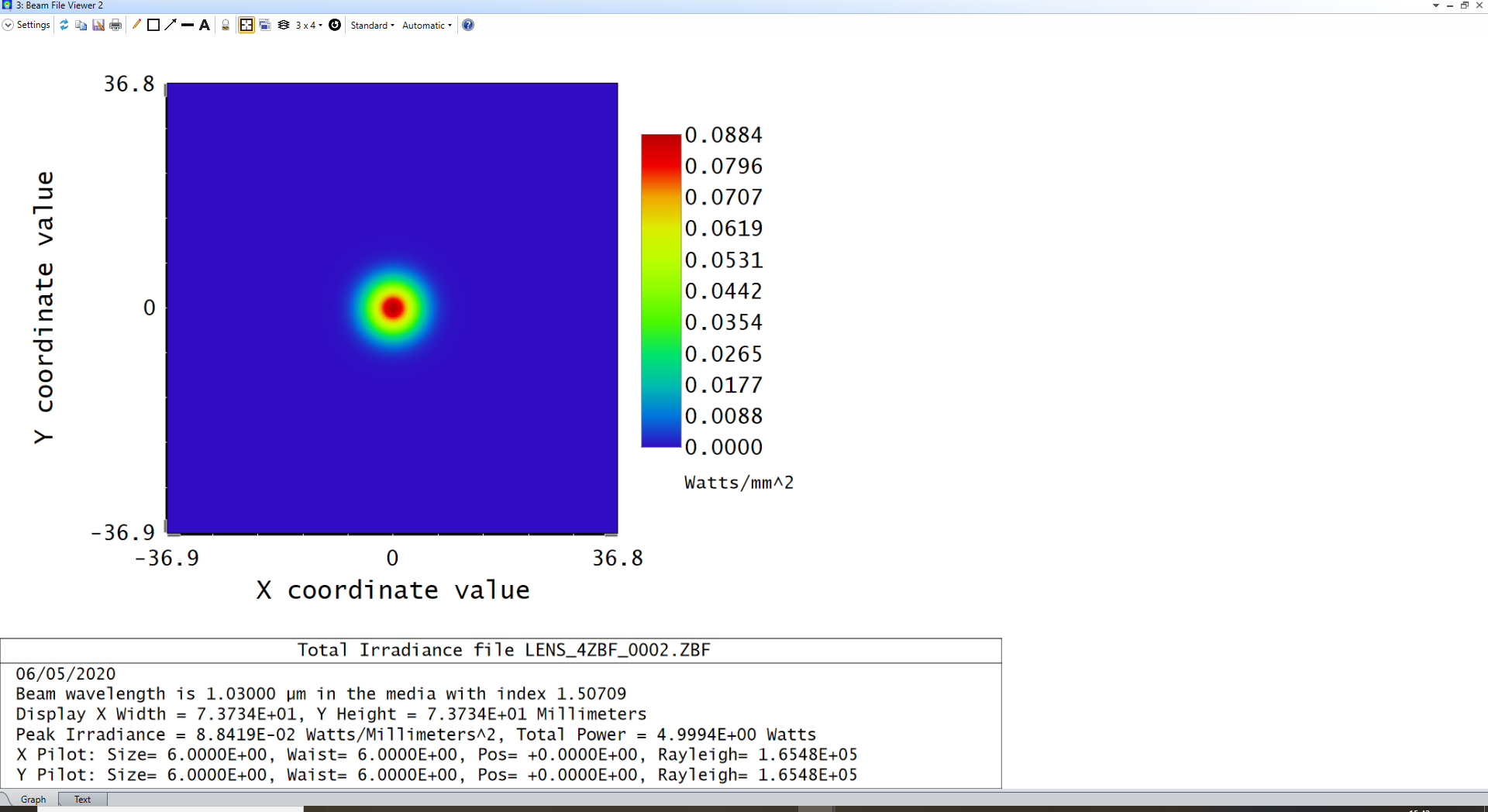
Surface 2 - Phase
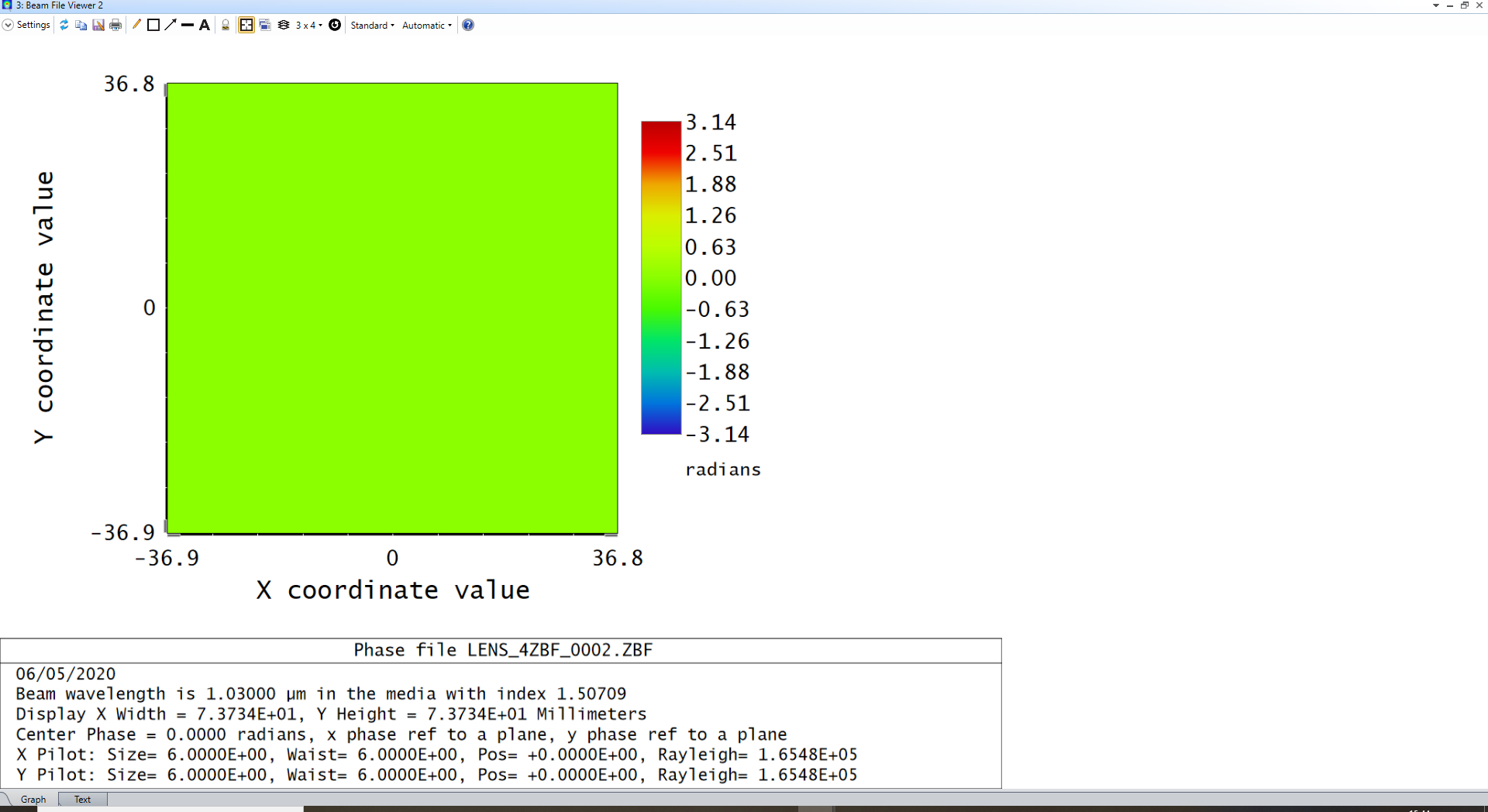
At Surface 3 (the curved lens surface) I observe a poorly sampled phase ring (aliasing), even while fixing the X-Y frame widths and using the highest default sampling rate.
Surface 3 - Phase (4x zoom)
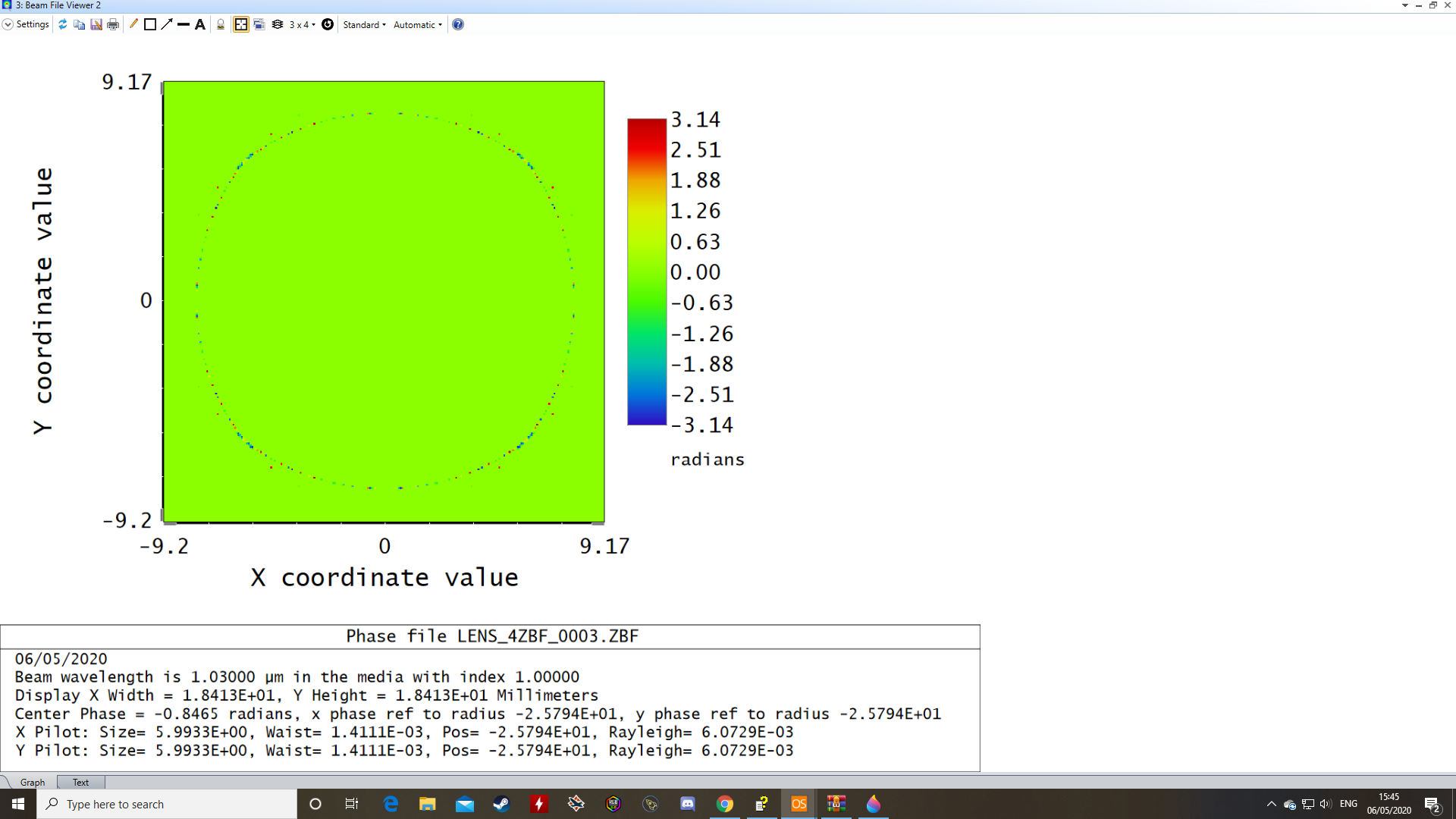
This then cascades into the remaining surfaces, distorting the expected Gaussian profile of the beam.
Surface 4 - Highlighted on Layout Tab
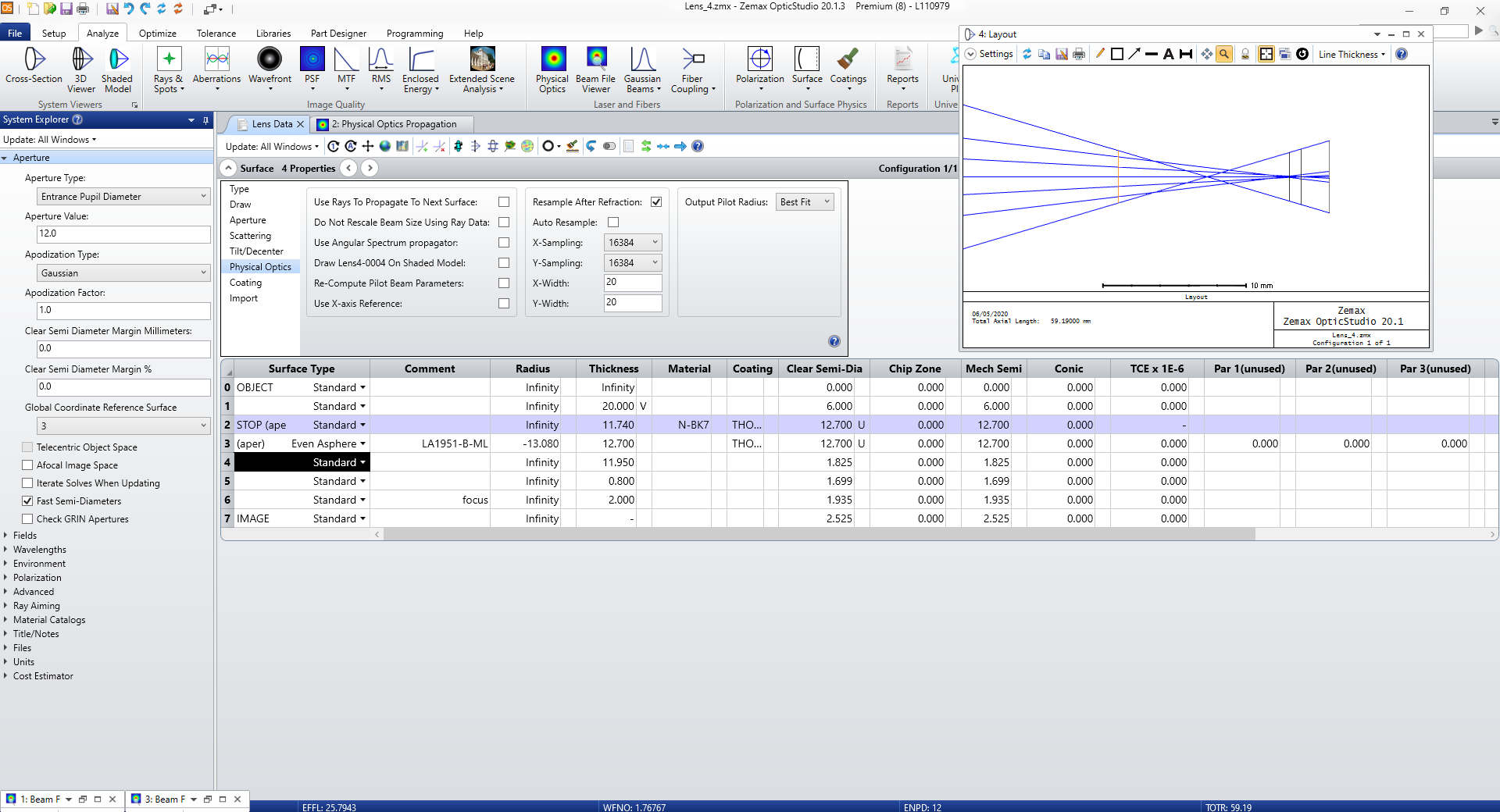
Surface 4 - Irradiance (4x zoom)
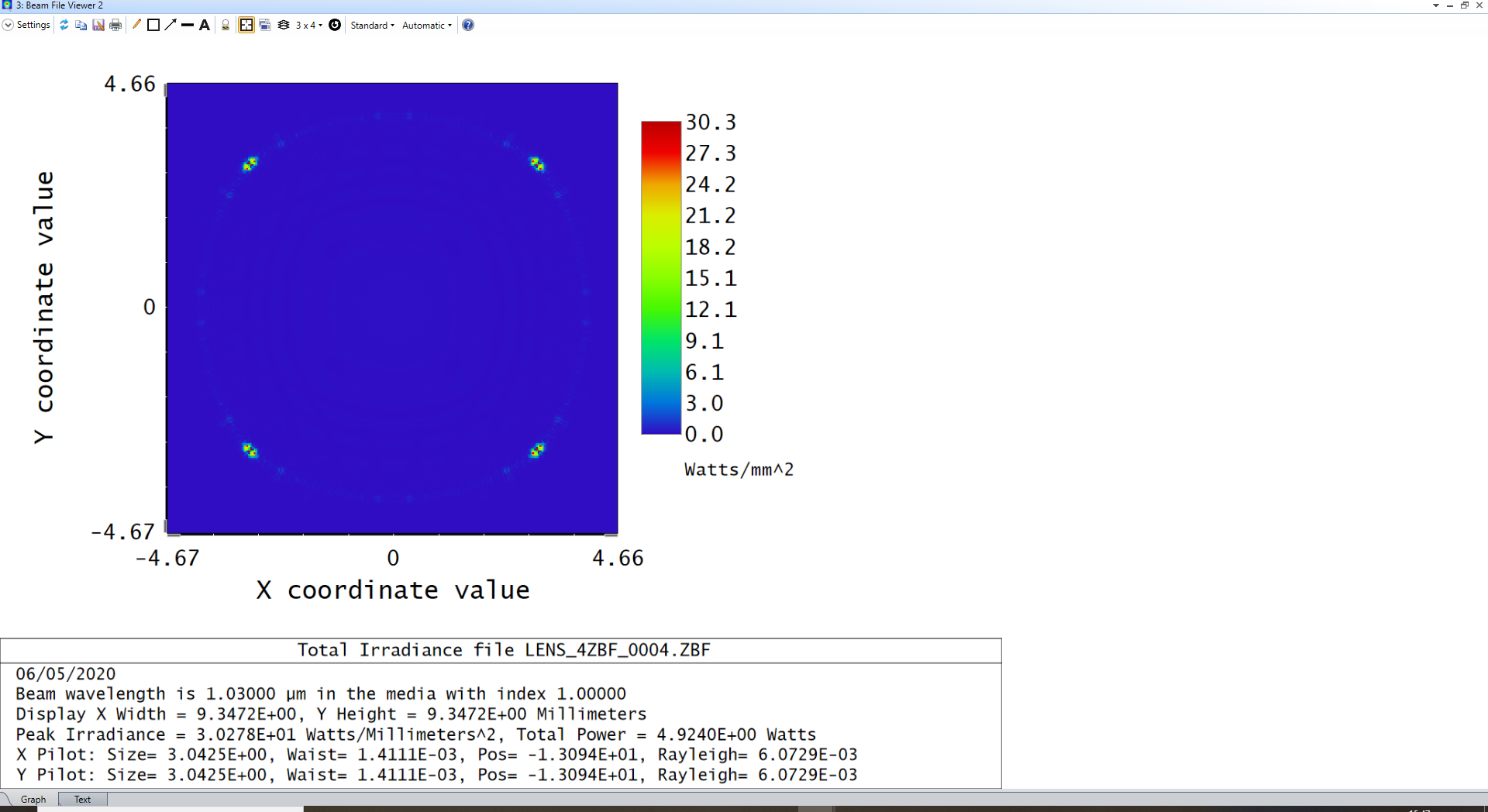
Surface 4 - Phase (4x zoom)
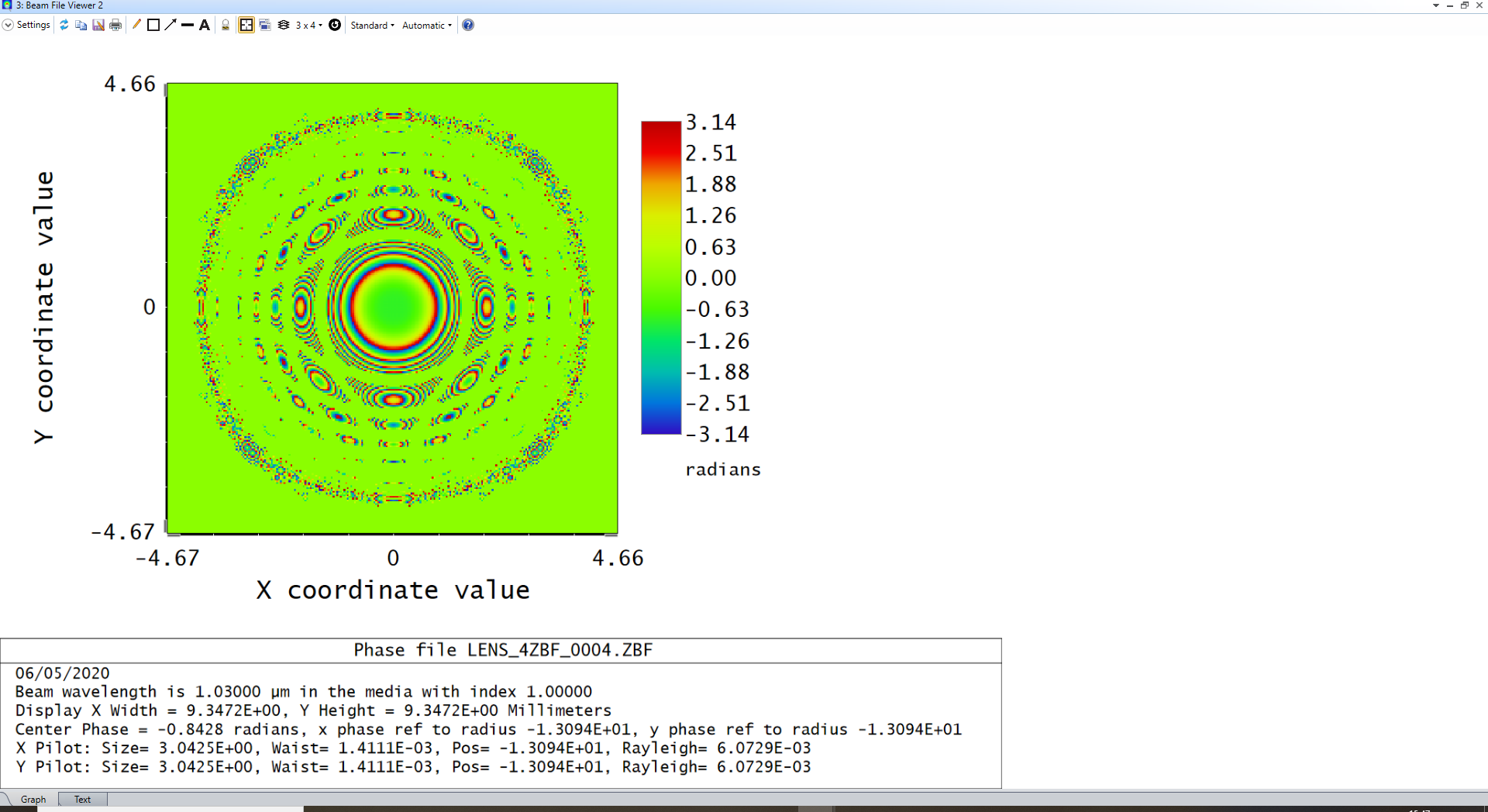
Surface 6 (Focus) - Irradiance (16x zoom)
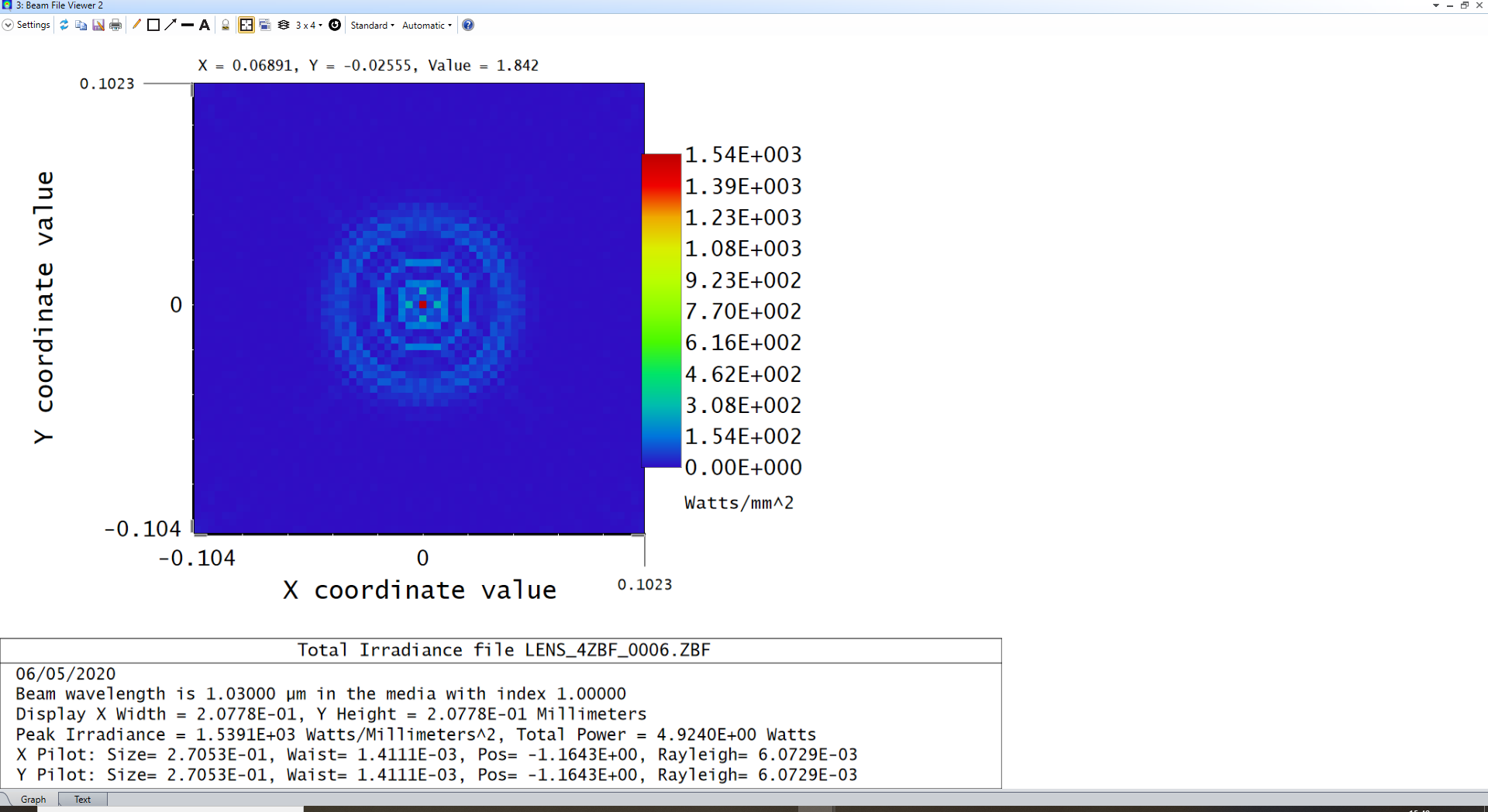
Surface 6 (Focus) - Phase (16x zoom)
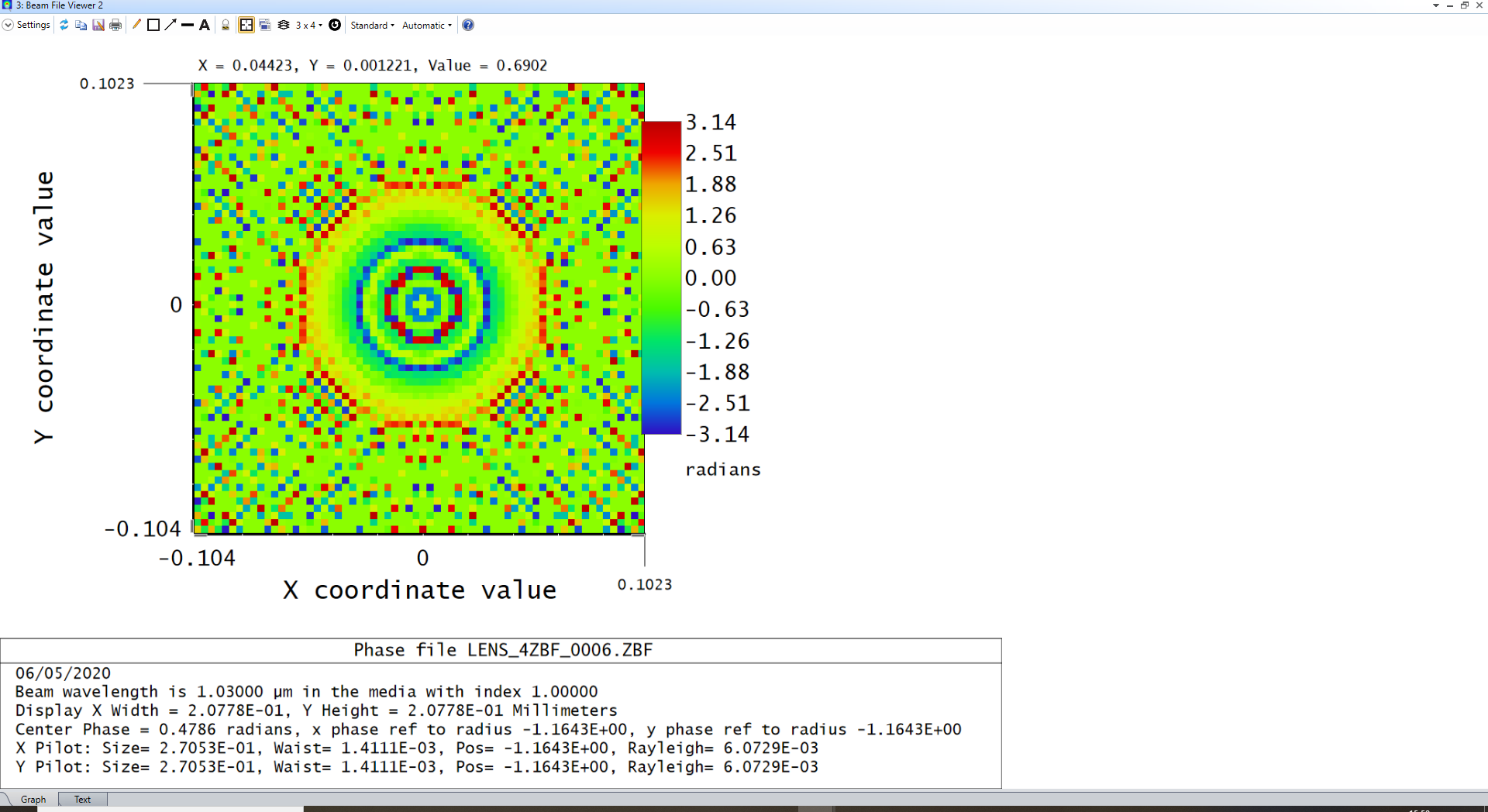
I have tried varying the frame widths at various surfaces throughout, but still cannot obtain a Gaussian beam shape at the focus due to the phase aliasing/interference distorting the beam. Even in previous trials where the irradiance profile at the focus has been processed at a highert resolution, similar distortion is observed.
Beam at focus in a previous trial
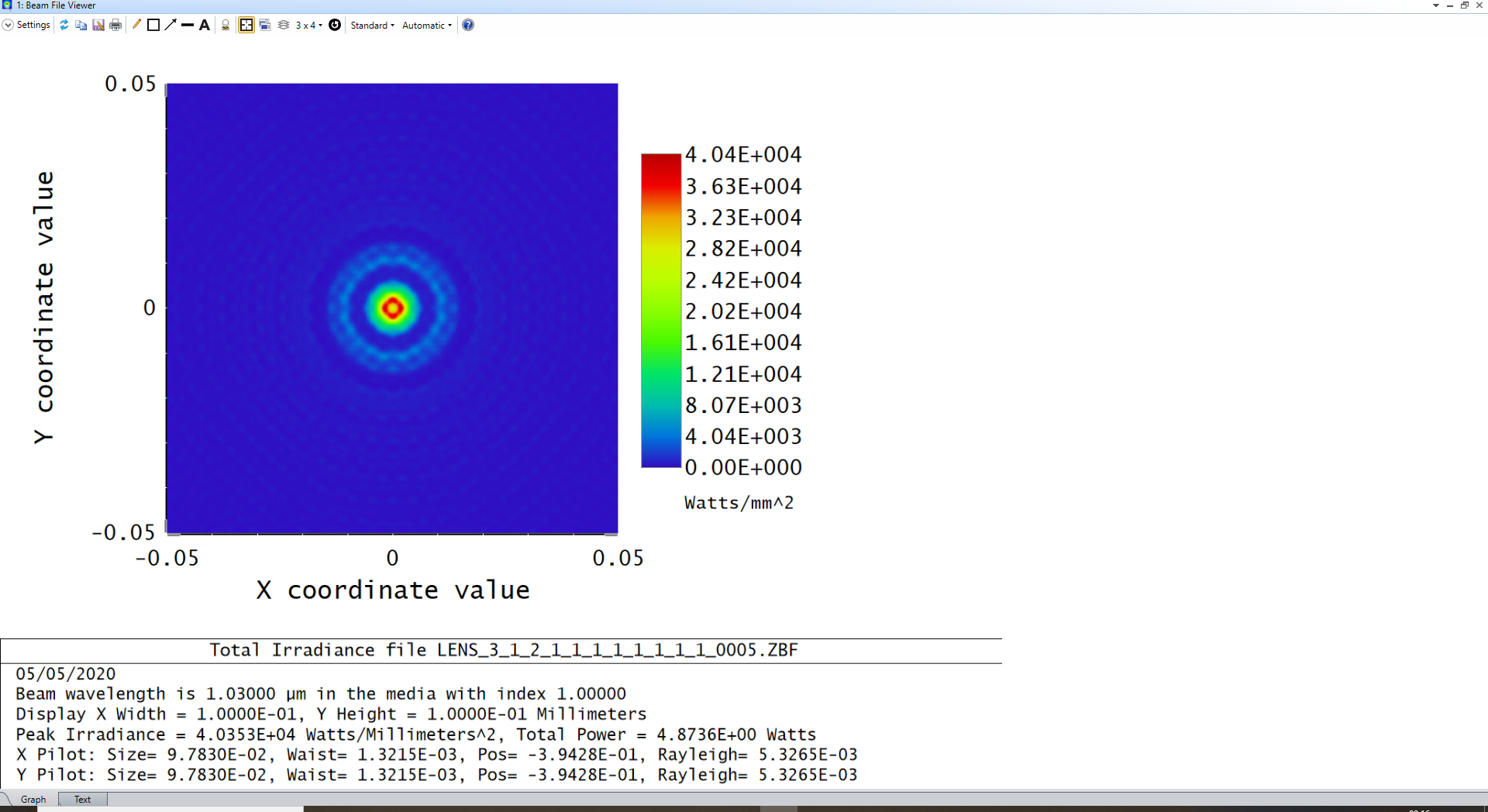
Any help or suggestions would be appreciated.





